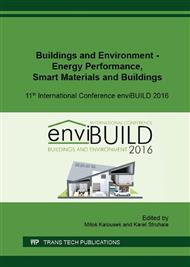p.485
p.493
p.501
p.509
p.519
p.527
p.537
p.547
p.556
Problems in the Designing of Acoustic Properties of Musical Rehearsals
Abstract:
Content of the post is to describe the creation of building structures, typology, internal environment, and internal wall coverings music rehearsal for optimal acoustic performance. One of the aspects of its internal environment is reverberation time. For this variable there are several methods of calculation. Article gives an indication of how the music was the laboratory building in the center of the music created and what problems the authors in its proposal met. Article contents and solving spatial and building acoustics model music musical rehearsal building downtown. Calculation fully respects Slovak standards valid for the design of room acoustics, as well as hygiene regulations on noise pollution. Acoustically treated room should serve as a laboratory for musical performance. If the building is more proof is needed to solve the sound insulation (building acoustics) that these areas do not interfere with each other. In addressing acoustics of testing can’t talk about bad or good acoustics, but rather on the season and out of corresponding with room acoustics, respectively, with activities in it.
Info:
Periodical:
Pages:
519-526
Citation:
Online since:
December 2016
Authors:
Price:
Сopyright:
© 2017 Trans Tech Publications Ltd. All Rights Reserved
Share:
Citation:


